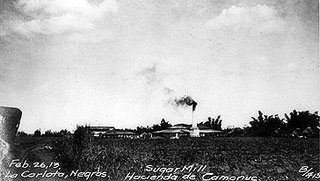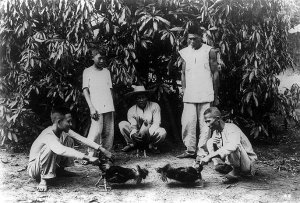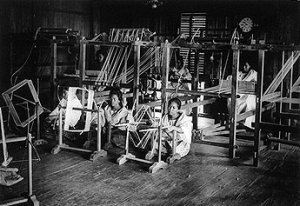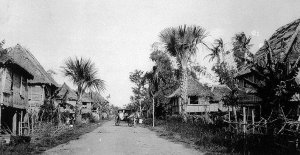In the news today are two Ilonggos who have given a human face to graft and corruption in the Philippines. One has achieved not only nationwide but also international media mileage while the other has merited only passing reportage in provincial media outlets. One is involved in a P728 million fund scam which caused tremors that shook the foundations of the Arroyo administration while the other is facing charges of bilking P5,000 from local Iloilo businessmen. I am referring to former DA Undersecretary Jocelyn “Joc Joc” Bolante and Electrical Inspector II Ricardo Gumabong of the Iloilo City Engineers Office. Bolante and Gumabong are perfect illustrations of the old adage, "the small steal small while the big steal big."
I believe that most Filipinos have already heard of Joc Joc Bolante and how he allegedly misappropriated the Department of Agriculture’s fertilizer fund amounting to P728 million for the 2004 campaign of President Arroyo. Thus, there is no need for a lengthy discussion of his case here. Bolante's story has been well-covered by Philippine media and has even been the subject of text jokes. And since his recent arrest at the Los Angeles airport, Bolante’s case has now gained international media attention. Joc Joc Bolante, who as an Agriculture Undersecretary and an Arroyo campaign insider, moved in the upper echelons of Philippine bureaucracy. He has become a symbol, a poster boy for the typical "big-time, big-stakes” Filipino crook.
In contrast, only a few Filipinos have heard about Ricardo Gumabong. Although he was frontpage material a few weeks back, Gumabong’s story has been reported only in the local dailies in Western Visayas. A member of City Hall’s “Task Force Boltahe,” Gumabong was caught red-handed extorting money from small business establishments and homeowners in Iloilo City. Originally created by former Iloilo City Mansueto “Mansing” Malabor to go after electricity pilferers in the city, Task Force Boltahe eventually became a cash cow used by unscrupulous City Hall employees to extort money from residents. The group’s modus operandi is simple: catch a residential or business establishment with illegal electric connections and blackmail them into paying a small “fee” for not pursuing pilferage charges against them.
Subsequently, investigators found out that Gumabong is not even a registered master electrician and thus not qualified for his job at the City Engineer’s Office (CEO) Electrical Safety Division. Professional Regulatory Commission (PRC) Records Section Officer Emma Francisco revealed that Gumabong’s scholastic records appear spurious because his name does not appear in the list of board passers to the 1979 Master Electrician licensure exams. The photocopy of Gumabong’s employment records at City Hall show that he took the Master Electrician exams on September 2, 1979 and obtained a general average of 75.5 percent. His records show that his license was issued by then PRC Commissioner Eric Nubla.
While many people may not have heard of Gumabong, most Filipinos are familiar with his type. Gumabong embodies the typical Pinoy petty crook; low-ranking bureaucrats who use their narrow powers and limited discretion to prey on hapless Filipinos. You can find "Gumabongs" in any public office, especially in regulatory and enforcement agencies. And the only reason why the "Gumabongs" of this world thrive is because ordinary Filipinos ordinarily prefer to avoid conflict. Nobody really wants to make a big fuss over a few thousand pesos, especially if it helps "facilitate" things or worse, if one is caught violating a rule.
I am glad that Iloilo City Mayor Jerry Treñas has already stepped into the "Task Force Boltahe" mess, and corruption charges are already being readied against Gumabong. Likewise, I am happy to learn that Bolante is similarly situated and is finally being made to "suffer" for his "crimes." As a Filipino, I feel it is really shameful to see Bolante just touring around the world and having the time of his life while everyone back home is trying to make him account for the fertilizer fund. I think it is also embarrassing that it took American "intervention" to catch Bolante and to effect some measure of "justice" in his case. It makes us Filipinos look like a bunch of immature adults unable to take care of our own affairs. No wonder the Philippines can't get no respect from other nations!
I believe that most Filipinos have already heard of Joc Joc Bolante and how he allegedly misappropriated the Department of Agriculture’s fertilizer fund amounting to P728 million for the 2004 campaign of President Arroyo. Thus, there is no need for a lengthy discussion of his case here. Bolante's story has been well-covered by Philippine media and has even been the subject of text jokes. And since his recent arrest at the Los Angeles airport, Bolante’s case has now gained international media attention. Joc Joc Bolante, who as an Agriculture Undersecretary and an Arroyo campaign insider, moved in the upper echelons of Philippine bureaucracy. He has become a symbol, a poster boy for the typical "big-time, big-stakes” Filipino crook.
In contrast, only a few Filipinos have heard about Ricardo Gumabong. Although he was frontpage material a few weeks back, Gumabong’s story has been reported only in the local dailies in Western Visayas. A member of City Hall’s “Task Force Boltahe,” Gumabong was caught red-handed extorting money from small business establishments and homeowners in Iloilo City. Originally created by former Iloilo City Mansueto “Mansing” Malabor to go after electricity pilferers in the city, Task Force Boltahe eventually became a cash cow used by unscrupulous City Hall employees to extort money from residents. The group’s modus operandi is simple: catch a residential or business establishment with illegal electric connections and blackmail them into paying a small “fee” for not pursuing pilferage charges against them.
Subsequently, investigators found out that Gumabong is not even a registered master electrician and thus not qualified for his job at the City Engineer’s Office (CEO) Electrical Safety Division. Professional Regulatory Commission (PRC) Records Section Officer Emma Francisco revealed that Gumabong’s scholastic records appear spurious because his name does not appear in the list of board passers to the 1979 Master Electrician licensure exams. The photocopy of Gumabong’s employment records at City Hall show that he took the Master Electrician exams on September 2, 1979 and obtained a general average of 75.5 percent. His records show that his license was issued by then PRC Commissioner Eric Nubla.
While many people may not have heard of Gumabong, most Filipinos are familiar with his type. Gumabong embodies the typical Pinoy petty crook; low-ranking bureaucrats who use their narrow powers and limited discretion to prey on hapless Filipinos. You can find "Gumabongs" in any public office, especially in regulatory and enforcement agencies. And the only reason why the "Gumabongs" of this world thrive is because ordinary Filipinos ordinarily prefer to avoid conflict. Nobody really wants to make a big fuss over a few thousand pesos, especially if it helps "facilitate" things or worse, if one is caught violating a rule.
I am glad that Iloilo City Mayor Jerry Treñas has already stepped into the "Task Force Boltahe" mess, and corruption charges are already being readied against Gumabong. Likewise, I am happy to learn that Bolante is similarly situated and is finally being made to "suffer" for his "crimes." As a Filipino, I feel it is really shameful to see Bolante just touring around the world and having the time of his life while everyone back home is trying to make him account for the fertilizer fund. I think it is also embarrassing that it took American "intervention" to catch Bolante and to effect some measure of "justice" in his case. It makes us Filipinos look like a bunch of immature adults unable to take care of our own affairs. No wonder the Philippines can't get no respect from other nations!


















